Hey there! If youâve ever felt the sneezy, itchy annoyance of seasonal allergies, youâre not alone. Crafting a personalized allergy management plan can make all the difference in enjoying the beauty of the changing seasons without the discomfort. With just a few simple strategies and tips, you can take control of your symptoms and breathe a little easier. Curious to learn more about how to tackle those pesky allergies this season? Let's dive in!
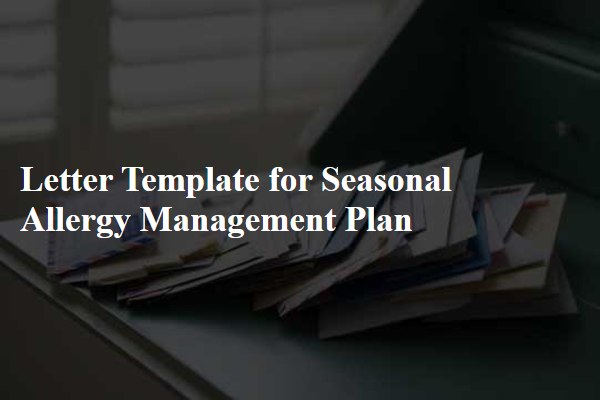
Patient Information
A seasonal allergy management plan is essential for individuals suffering from allergic rhinitis, commonly triggered by pollen from trees, grasses, and weeds during specific seasons. Patients should provide personal details such as age, gender, and contact information, ensuring accurate medical records. Essential notes include allergy history, detailing specific allergens like ragweed or tree pollen, and previous symptoms experienced, such as sneezing or nasal congestion during peak allergy months, typically April to June. The management plan should outline preventative measures, including local allergen forecasts, which are crucial for anticipating allergy spikes, and recommended medications like antihistamines or nasal corticosteroids. Regular follow-up appointments should be scheduled to assess the effectiveness of the management strategies, with adjustments made according to symptom severity, ensuring optimal health throughout allergy season.
Allergy Triggers and Symptoms
Seasonal allergies can arise from various triggers, including pollen from trees, grasses, and weeds. Common symptoms often manifest as nasal congestion, sneezing, itchy eyes, and fatigue. Specifically, tree pollen peaks in spring months, particularly from March to May, while grass pollen is more prevalent in late spring to early summer, around May to July. Weeds can contribute to allergies from late summer into fall, typically August to October. Identifying specific allergens through skin tests or blood tests can provide clarity. Individuals can mitigate symptoms by utilizing air purifiers, regularly washing bedding, and avoiding outdoor activities during high pollen counts, often reported through local weather updates. Proper management strategies can include over-the-counter antihistamines or prescription medications for more severe cases. Staying informed about pollen forecasts through apps or websites can aid in planning outdoor activities to minimize exposure.
Medication Plan
Seasonal allergies can significantly impact daily life, particularly during pollen-heavy months in spring and fall. Antihistamines, such as Loratadine, can alleviate symptoms like sneezing and itchy eyes, with suggested dosages often around 10 mg once daily. Nasal corticosteroids, like Fluticasone Propionate, help reduce inflammation in the nasal passages, typically administered as one to two sprays per nostril daily. For severe cases, allergists may recommend the use of leukotriene inhibitors, such as Montelukast, which may be taken at a dose of 10 mg per day. Regularly updating this medication plan during allergy seasons, particularly March through May for tree pollen and August through November for ragweed, can enhance quality of life while managing symptoms.
Environmental Control Measures
Seasonal allergies can be effectively managed through various environmental control measures aimed at minimizing exposure to allergens. Implementing strategies such as using high-efficiency particulate air (HEPA) filters in home air conditioning systems can significantly reduce airborne pollen (tiny particles from plants that trigger allergic reactions). Regularly washing bedding and curtains in hot water (at least 130 degrees Fahrenheit) helps eliminate dust mites, which thrive in textiles. Keeping windows closed during high pollen seasons (typically spring and fall) will prevent allergens from entering living spaces, while using dehumidifiers can help maintain indoor humidity levels below 50%, discouraging mold growth. Additionally, wearing sunglasses outdoors can shield the eyes from pollen, while showering after outdoor activities effectively removes allergens from skin and hair, providing relief from irritation and discomfort for allergy sufferers.
Follow-up and Monitoring Instructions
Seasonal allergies, often caused by allergens like pollen from trees, grasses, and weeds, require a detailed management plan to minimize symptoms. Effective monitoring includes tracking local pollen counts through resources like the National Allergy Bureau, with levels often peaking in spring (March-May) and fall (September-November). Daily symptom logs, noting severity and triggers, can help identify patterns, enabling better adjustments in treatment protocols, such as the use of antihistamines like cetirizine or nasal corticosteroids. Regular check-ins with healthcare providers ensure timely modifications to the management plan, particularly during high pollen days (above 100 grains per cubic meter), to optimize relief strategies and maintain quality of life.
Letter Template For Seasonal Allergy Management Plan Samples
Letter template of effective strategies for mitigating seasonal allergies
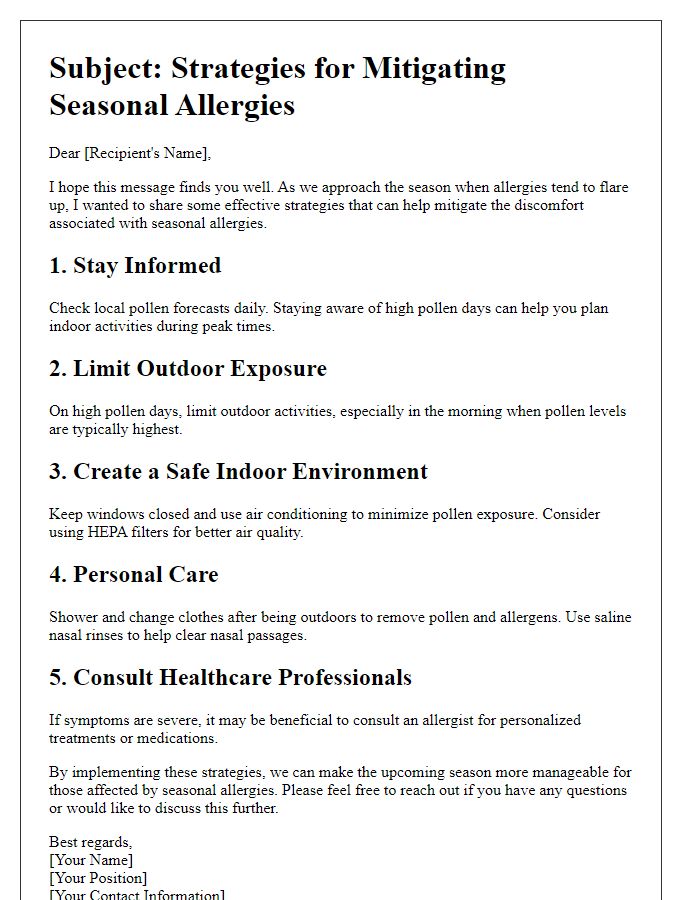

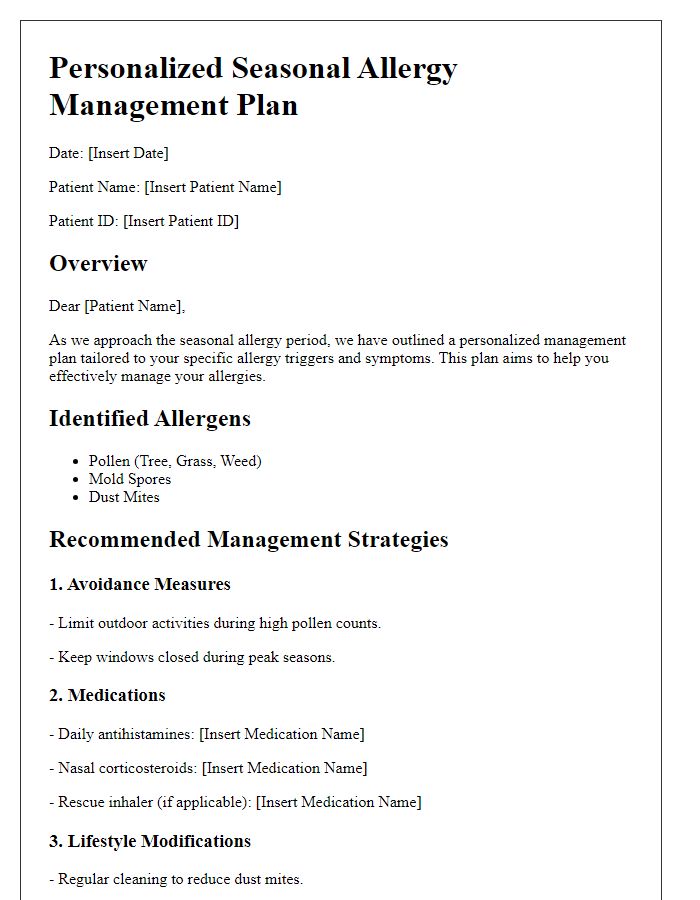
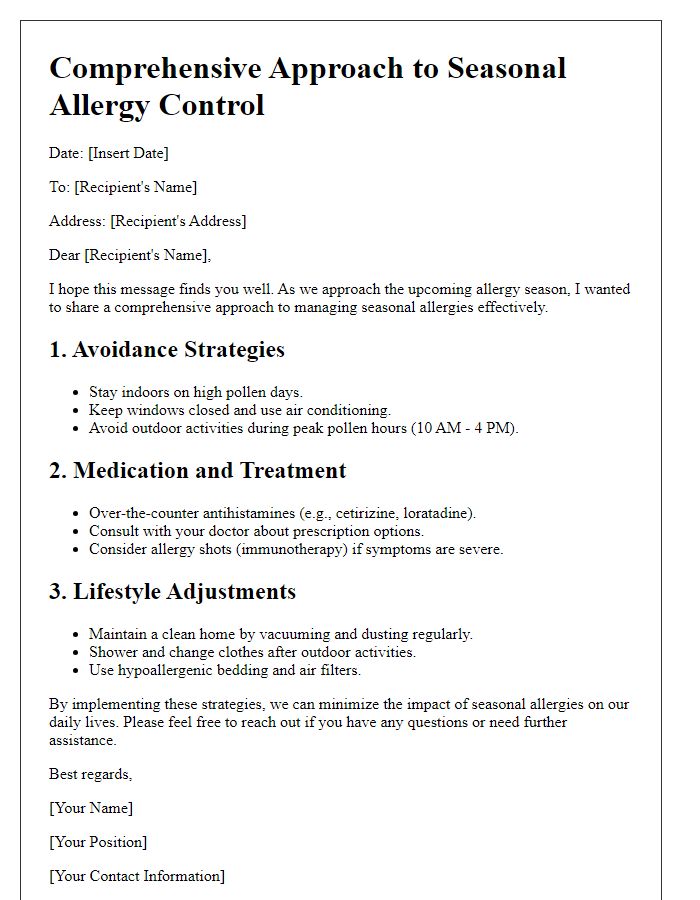
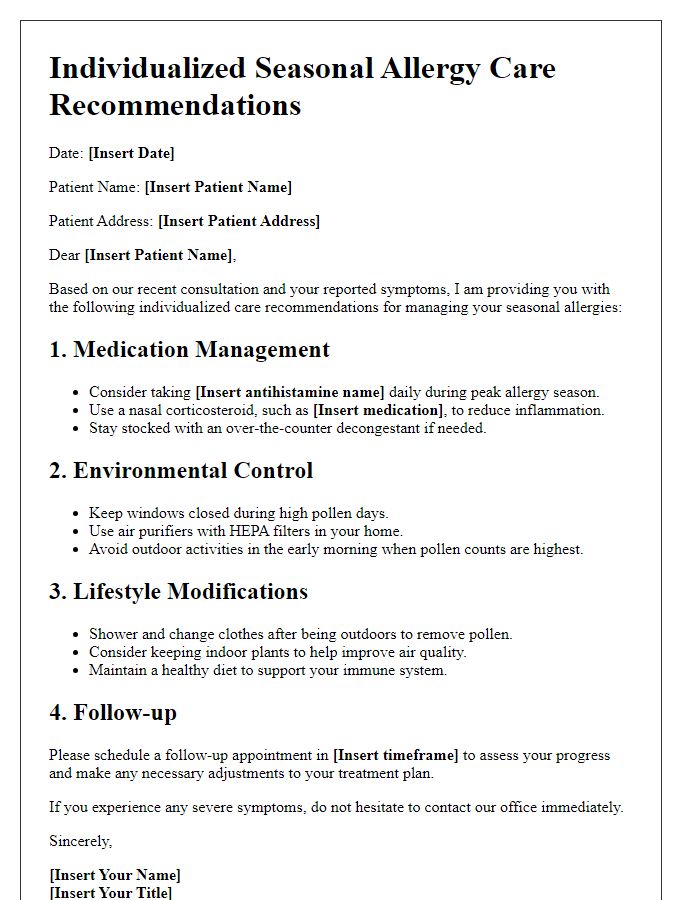
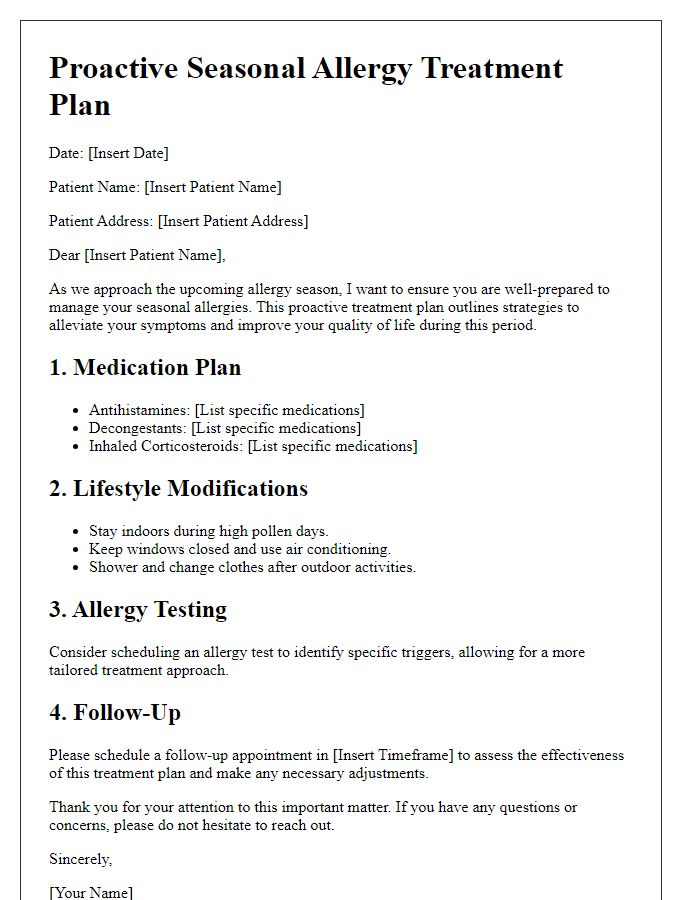

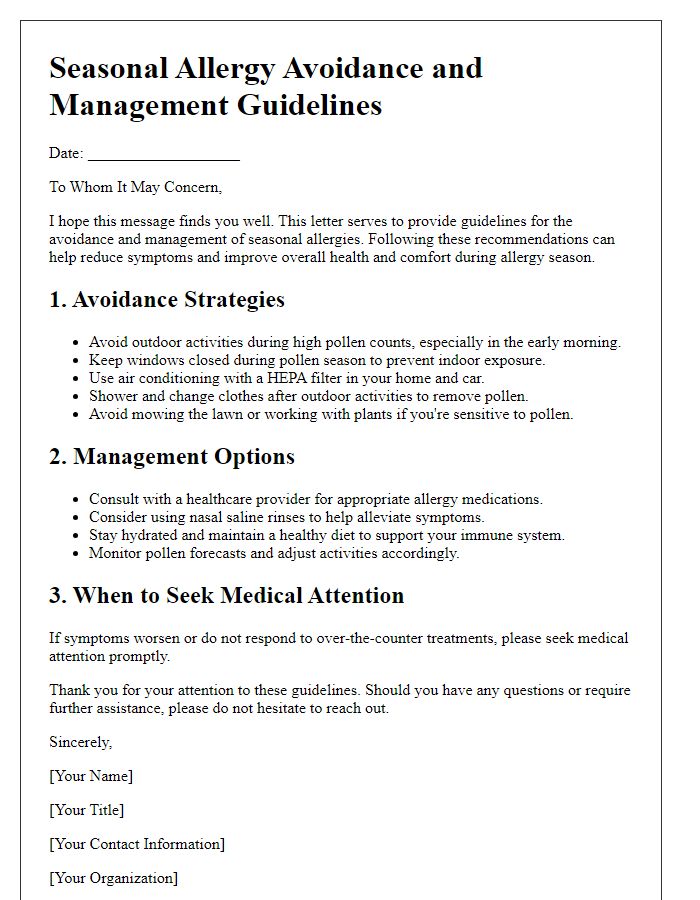
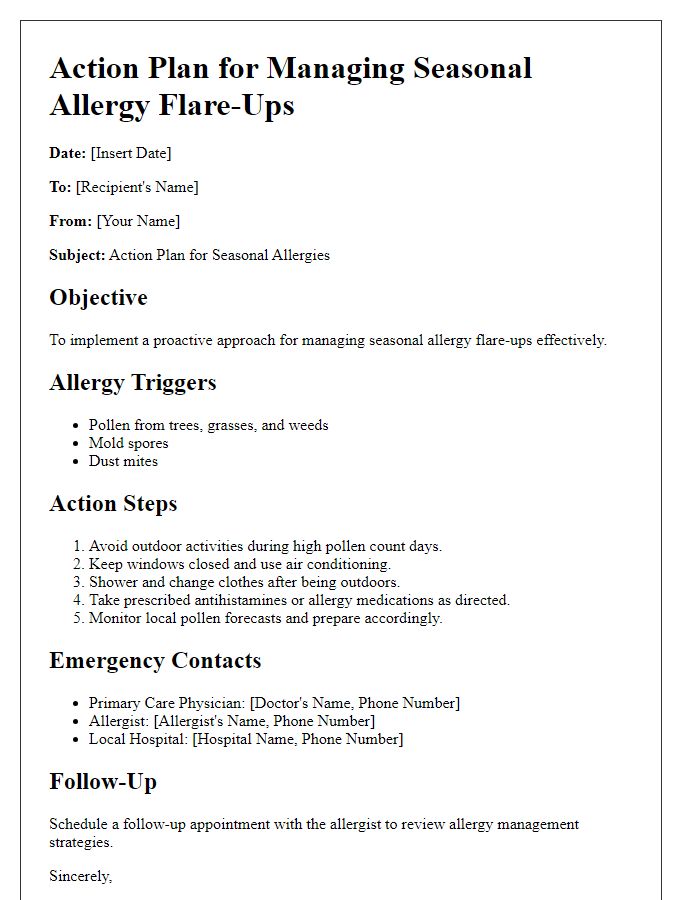
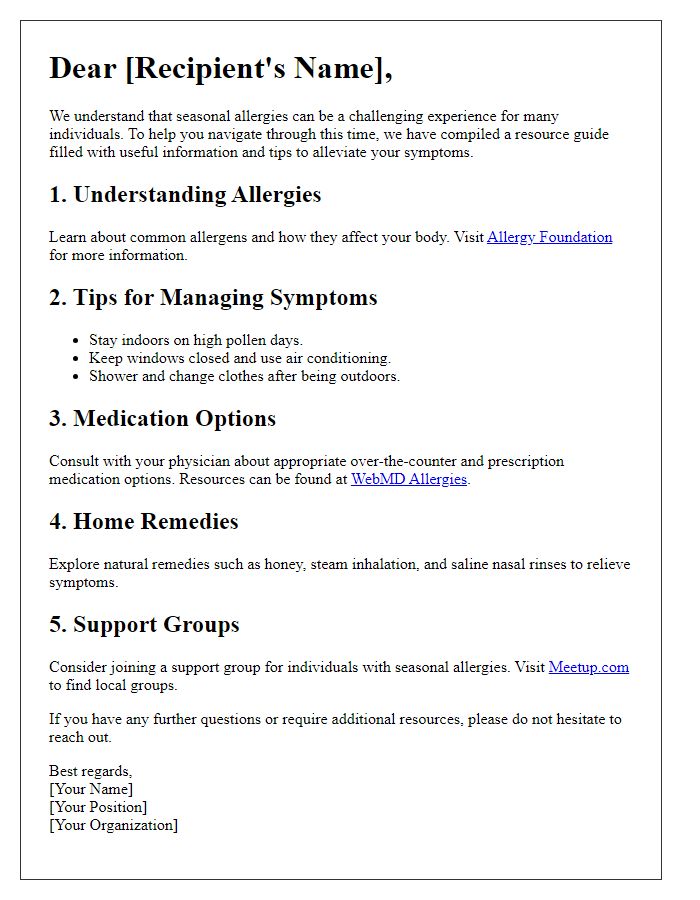
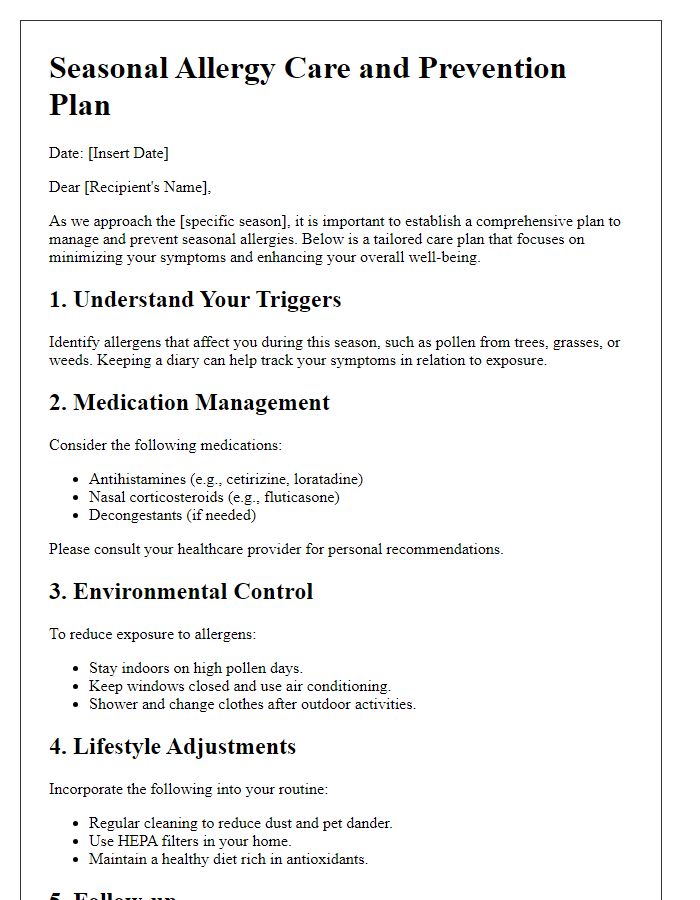


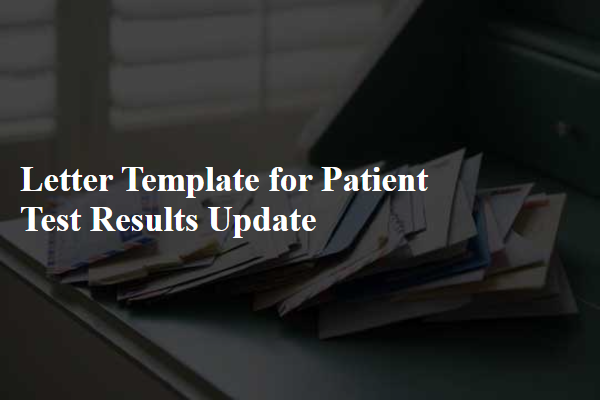


Comments